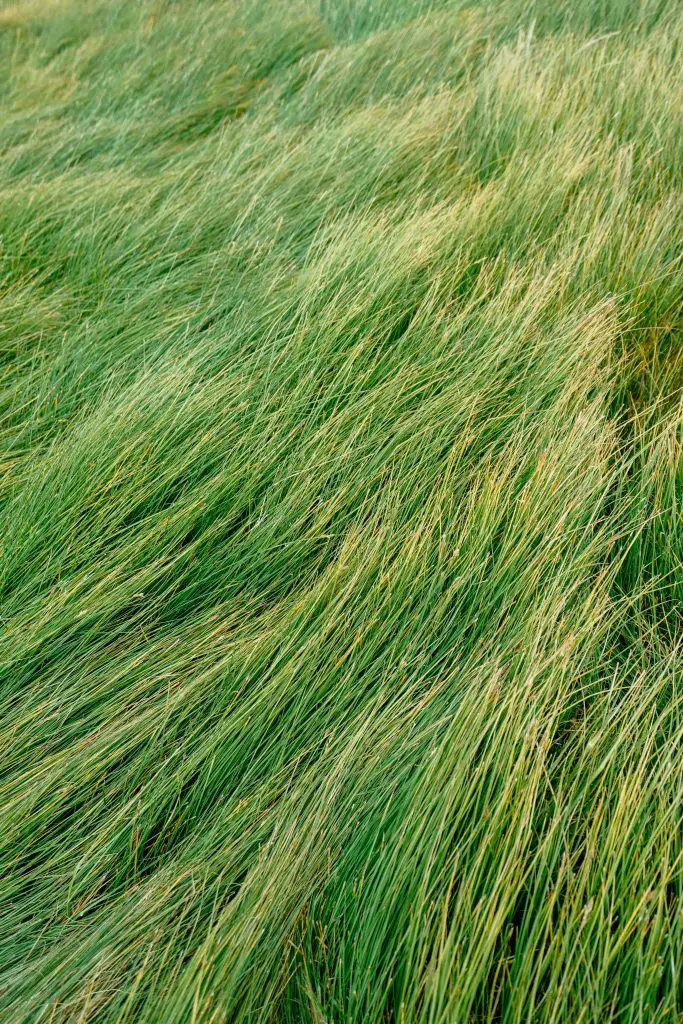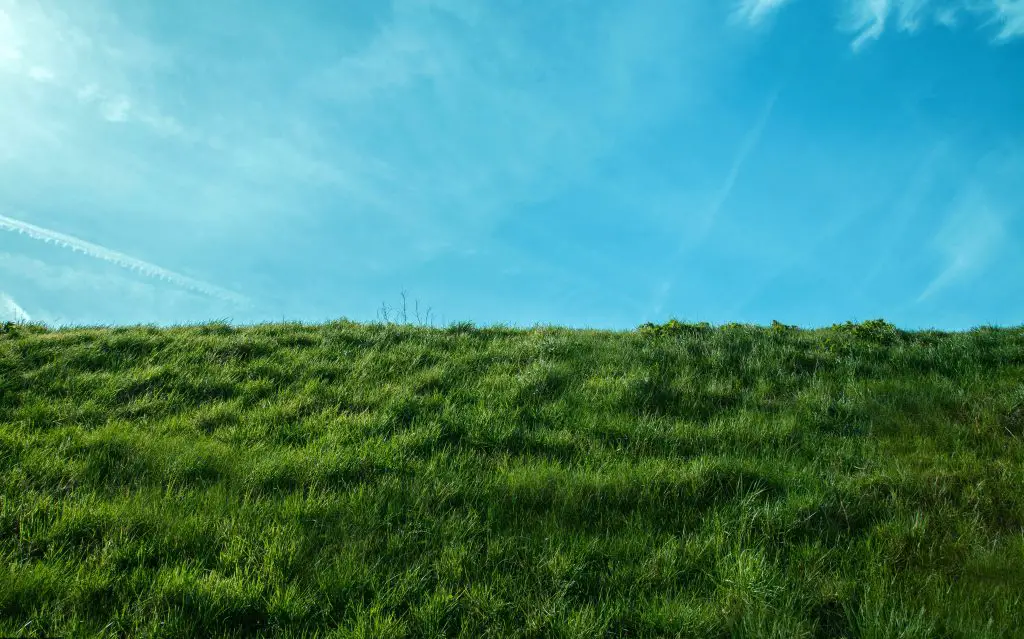Is There Grass That Doesn’t Grow? Growing grass is one of the most labor-intensive maintenance jobs in any garden. It is common for people to try and reduce the level of work required to maintain their lawn. But is there a grass that exists that doesn’t grow and doesn’t require ongoing maintenance?
There isn’t a type of grass that doesn’t grow at all however there are certain varieties of grasses that do grow at a slower rate which can be used to reduce the level of maintenance lawn. However, these commercial no-mow grass blends claim to reduce the number of times that you need to mow only once or twice a year.
However, it is important at this point to temper your expectations of these types of products. If you’re expecting to have a lawn that looks like it’s been recently mowed expect to be disappointed. Generally, the no-mow grass mixes will typically produce a lawn that has a soft ruffled appearance that suggests the Lawn is approaching a point which it needs to be cut.
However, because of the nature of the grass species used in the mixture once the grass gets to a certain length, it will tend to lie down creating that soft ruffled appearance that will generally be maintained for an extended period of time.
The particular variety of grass that is used in these blends will vary depending upon the location where you are planning to grow the lawn. There are generally two different blends the most commonly used.
The blend that is suited to the colder Northern US states consists of creeping bentgrass which is designed to tolerate cold climates that have hard frosts. This variety of grass is relatively shade tolerant and generally produces growth that is typically 3 to 6 inches tall.
The southern version of the grass blend is a blend of two different types of grass in most cases Fescue and buffalo grass. As you might expect this blend is specifically designed to handle the hot dry conditions that occur in the Southern States of the US.

Are The Manufacturers Claims Accurate In Terms Of How Often You Have To Mow?
When looking at the comments of people that have installed no-mow lawns there is a consistent consensus that the rate of growth of these blends is significantly lower than other types of grass. Most customers indicate that the grass does develop in length and then tends to slow down after it reaches a height of anywhere between 6 and 12 inches.
In terms of the frequency of mowing most people have said that they typically need to mow around once a month through the early part of spring, typically in April, May, and June. And then after this period of growth, the grass doesn’t need to be mowed again until October.
However, the frequency of mowing does depend upon the weather somewhat ie how hot and dry it’s been. The other factor is purely aesthetic and is dependent on how long you are willing to allow the grass to grow with some owners stating that they only mow once a year.
These comments indicate that while the grass is not entirely no-mow it does certainly reduce the degree of maintenance required provided that you’re willing to tolerate having a slightly shaggy lawn for extended periods of the year.
What Do You Do If You’ve Already Got An Existing Lawn That You Want To Change Over To No Mow Grass?
There are two approaches that can be taken if you are considering changing over from a conventional lawn to a no-mow. The first approach is to kill the grass that is currently growing in your lawn with a herbicide and replant it with new grass seed after existing grass has died.
This process will generally provide a much faster transition to the new lawn than the second method however there is significantly more work and the transition will be more costly. The reason for this is that you need to purchase a herbicide that may need to be applied more than once to the lawn to completely kill it off.
The second method that can be used is a method known as over-seeding the existing lawns. In this method, the grass is sprinkled directly onto the existing lawn and allowed to grow. Over time the new grass seed will progressively crowd out the existing grass resulting in a gradual transition from a conventional lawn to a no-mow lawn.
This transition typically takes 1 to 2 seasons to occur depending upon the type of grass that is already present. To ensure that this method is successful it is recommended that the volume of grass seed applied to be increased by approximately 25 to 50% higher than normal to ensure that there is sufficient grass to successfully crowd out the existing lawn.
The reason that this is important is because when applying grass seed to an existing lawn there is always a degree of uncertainty as to how much grass seed actually reaches the soil and germinates successfully.
If the existing grass is particularly tenacious it may be necessary to apply a second or even a third sowing of seeds to ensure that the no-mow grass becomes the dominant grass species in your lawn.

Are There Alternatives To No Mow Grass?
There are several alternatives to these no-mow grass plants with the most obvious being artificial grass. However, using artificial grass does have a few disadvantages which should be discussed. The first consideration is that artificial grass is costly to install.
The second consideration is that while there is no mowing required artificial grass is not entirely maintenance-free. The reason it is not entirely maintenance-free is that organic material such as leaves will still build upon the grass and require it to be removed but either sweeping or raking it off.
If this maintenance is not done on a semi-regular basis, particularly in cases where there are large deciduous trees nearby, the debris will build up on the grass and not break down readily.
The other disadvantage of using artificial grass is if you have a dog is that there will be an issue with contamination of the grass with dog poo which can become unsanitary over a period of time.
The second alternative to no-mow grass is to replace your lawn with a hard surface such as pavers, cement, or a rock-based mulch with a weed mat underneath. However, these alternatives are generally cost-prohibitive when covering a large area.
Another alternative is to simply remove your lawn and replace it with garden beds however in doing this it is important to recognize that you need to select plants for the garden carefully to ensure that the garden maintenance is minimized.
The key attributes of the plants you looking for ones that smother sections of the garden preventing future maintenance issues such as weeding.
Relevant Articles
Why Do Supermarket Herb Plants Die? And How To Keep Them Alive?
What To Do With Wood Chips From Chipper? (Here are 10 Ways To Use Them)
What’s The Difference Between Sweet Peas And Green Peas? (What You Need To Know)
Are Jerusalem Artichokes Easy To Grow?
